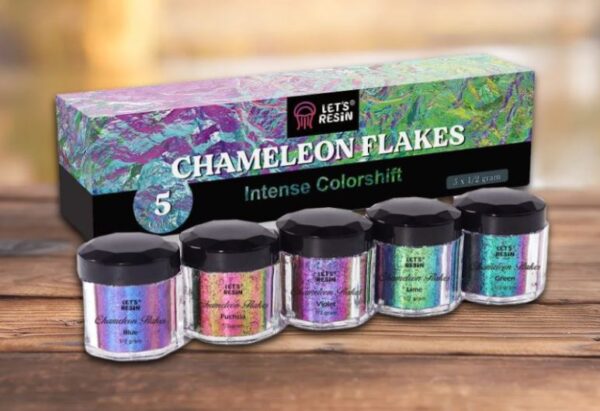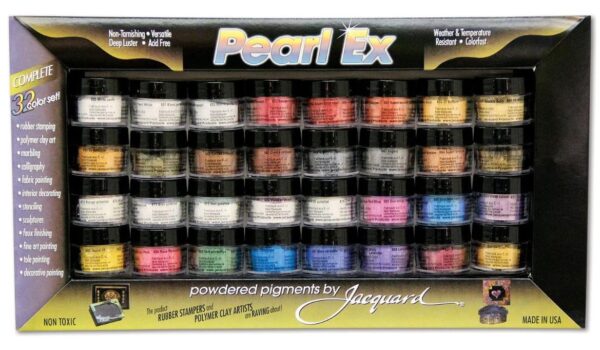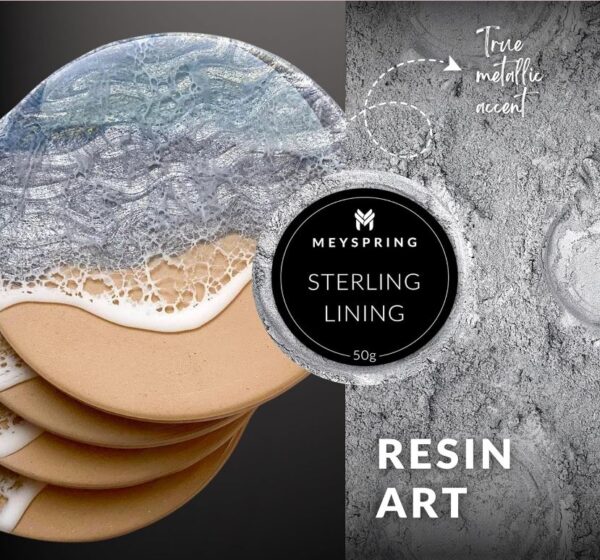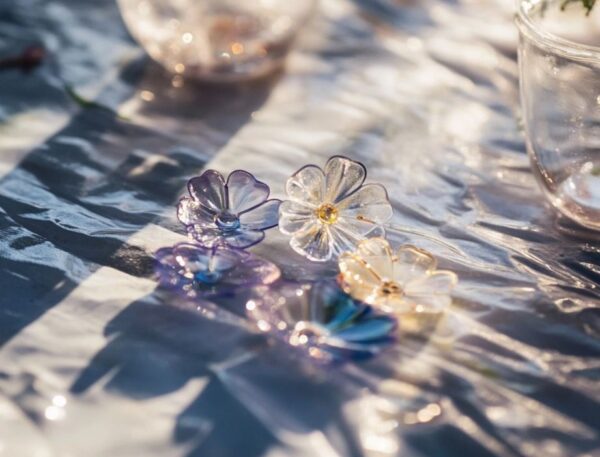19 Best Colorants For Epoxy Resin
Here are the best colorants for epoxy resin & UV resin. Hey there, resin artists! If you’re looking to add some extreme color to your resin creations, you’re in the right place.
Coloring resin is all about having fun and getting creative. The key to getting those beautiful results is picking the best colorants that will work in epoxy resin and UV resin.
If you’re a pro or just starting to learn about epoxy resin, I’m here to help. If you are wondering what you can use to color epoxy resin, I have some fantastic ideas for you.

This guide will show you to the best colorants and for epoxy resin and UV resin. There’s lots of ideas to make your resin art pop with full color and also transparent colors that I want to show you as well.
So, let’s explore your options for dying epoxy liquid resin and make sure your resin projects shine with the perfect touch of color.
Let’s go through this list together so you can find some new colors to add to your resin ideas.
Best Colorants For Resin
1. Color Shifting Colorants for resin
This is one of the best brands for pigment powder for resin. Color-shifting pigments are a fun colorant to use because they appear to shift the colors in the tinted resin.
These resin colourants contain specially engineered particles that change color depending on the angle, creating a chameleon-like effect. These are some of the best colorants for epoxy resin and also for UV resin.

When mixed into resin, they give a unique and ever-changing character to your creations, shifting between two or more colors as the viewing angle or lighting conditions change. The first time I used holographic pigments, I was hooked. They are so pretty!
Color-shifting pigments give you shifting hues that look fantastic in jewelry and resin crafts. Learn more about how to use mica powders in resin with our helpful guide.
how to use color shift mica powder
The magic of mica powders lies in their ability to create a shimmering effect that adds depth and dimension to resin projects.
To get this enchanting shimmer, mix a small amount of mica powder into your resin, adjusting the quantity to control the level of sparkle.
For a more pronounced effect, use a clear resin base to allow the mica’s reflective particles to shine through.
Blending Mica Powders for Unique Hues
One of the fascinating aspects of mica powders is creating custom hues by blending different shades.
Combine various mica powder colors in small increments, mixing thoroughly.
See our complete guides about using mica powder: Best mica powder kits for resin & How to use mica powder in resin.
2. Pearl Ex Pigments for resin
Pearl Ex pigments are top selling colorants for epoxy resin. These pigments are finely milled and contain pearlescent particles that create a lustrous, opalescent sheen when mixed with resin.
The quality of this brand is so good, and they can be used for so many things like coasters, charms and more.

Available in a wide spectrum of colors, Pearl Ex pigments can be used to get a shimmering effect in your resin creations.
It can give a soft, ethereal glow or a more vibrant, iridescent finish. That’s why they are some of the best resin pigments. I’ve also used them for watercolor paintings.
3. White Mica Powder for epoxy
White mica powder is a must have colorant for resin. This finely ground powder is derived from natural mica minerals, which are known for their shimmering, pearlescent qualities.

When incorporated into resin, white pearl mica powder imparts a gentle opalescent sheen, reminiscent of a pristine pearl’s luminosity.
The delicacy of this pigment allows for a sophisticated and versatile applications so it’s really popular for making resin jewelry and home décor items.
White pearl mica powder is a must-have for resin artists because of it’s wide range of uses, and it can also be mixed with other colorants. We have a helpful article about the best mica powder kits for beginners.
4. Golden Fluid Acrylic Paint
Golden Fluid Acrylic Paint is a high-quality, professional-grade acrylic paint used a lot around here because a little goes a long way. And it’s also easy to use because it’s a liquid pigment for resin and artwork. It’s brand that I use all of the time, especially the gold color.

Available in pretty much every color, including both traditional hues and unique specialty shades, Golden Fluid Acrylics give artists the opportunity to have a wide spectrum of effects in their work.
These paints have a smooth consistency and intense pigmentation so you only need a little bit. That’s good because it helps so that the resin doesn’t seize up, which is never fun!
Their fluid nature makes them ideal for a range of artistic applications, including painting, pouring, and resin art. And a top choice for how to make resin opaque.
5. Neon Pigment Powders for resin
Tints for epoxy resins are great to work with. If you are wondering how to color UV resin then these are a fun choice. Neon pigments are an electrifying and attention-grabbing addition to the world of creative artistry.
These specialized pigments come in an array of fluorescent, eye-popping colors that seem to radiate energy and excitement.

When incorporated into various art mediums, including resin, neon pigments produce intense, vivid hues that are especially vibrant under natural or ultraviolet lighting.
Use them for dynamic resin jewelry, contemporary paintings, and other artistic resin projects.
6. Resin Pigment Paste
One of the best resin colorants is Unity Resin and Rolio pigment paste. This type of colorant is truly stunning and comes in many colors. Beware of the term pigment paste though. There are brands who say they are offering pigment paste, but they are actually liquid dyes.

Pigment paste, is a highly concentrated paste that you use very little of because a little goes a long way. Pigment paste is popular in the colors gold, silver and copper. It also makes a great gift for a resin artist.
Here’s our list of the best pigment pastes for resin.
7. Gold Paint For Resin
Using gold paint in geode resin art is a great way to make your creations shine. It gives your geode-inspired designs great transition lines and draws the eye with its metallic gleam, similar to the elements of real geode minerals.

Whether you’re making geode coasters with vibrant colors or intricate tabletops, adding gold enhances the beauty of the geode concept in a fun and eye-catching way.
When incorporated into various art mediums, including resin, gold glitter paints imparts an unmistakable light catching section in your piece. Gold paint is for sure some of the best colorants for epoxy resin when you are making geodes.
8. colorful Polymer Clay Embeds
Polymer clay embeds are delightful components used in a variety of artistic endeavors, such as resin art and jewelry making.
These embeds are created by sculpting or molding polymer clay into various shapes, designs, or miniature objects, and then baking them to harden.

The possibilities for polymer clay embeds are virtually endless, as they can range from tiny sculptures and intricate patterns to lifelike miniature fruits, flowers, or animals.
These tiny, carefully crafted elements can be embedded or set within resin, polymer clay, or other artistic materials to add depth, texture, and interest to the final piece.
Polymer clay embeds allow artists to infuse their creations with personalized, thematic, or whimsical details.
9. Alcohol Inks for resin
Alcohol inks are a liquid medium used by artists and crafters to add translucent colors to a wide range of surfaces, including paper, glass, metal, ceramics, and even resin.

These inks are dye-based and are often alcohol-soluble, which means they can be easily manipulated and blended. That’s why they are some of the best colorants for epoxy resin when you need just a bit of color.
Their fluid nature allows for various techniques, such as dripping, blending, and marbling, making them a good choice for creating abstract art, intricate designs, or unique patterns.
See this article about the best alcohol inks for resin.
Potential Challenges and Solutions With Alcohol Inks
While inks bring brilliance to resin projects, they can pose certain challenges. One common issue is the potential for ink colors to blend unexpectedly, especially in layered designs.
Keep in mind that the alcohol content in some inks may lead to quicker resin curing so you might have to work faster.
Always test your chosen inks on a small scale before applying them to larger projects so that you don’t waste the resin or inks.
10. Metallic resin Powders
Metallic powders are will give you some amazing shimmering beauty.
These finely ground powders are often made of metallic particles, such as gold, silver, bronze, and copper.
When mixed with substances like resin, paint, or even polymer clay, give a luxurious and reflective metallic finish.

You can get an antique patina, a contemporary metallic sheen, or something in between.
11. UV Resin Colorants
UV resin colorants are specialized pigments or dyes designed for use with ultraviolet (UV) curing resin. These are popular because they already have the proper pigments mixed in which can help the resin from yellowing over time.
These colorants are made to work with UV resin, which cures quickly when exposed to UV light. UV resin colorants come in various forms, including liquid dyes, powders, or even pre-mixed colored resins.

You can use these to create jewelry, decorative items, or intricate designs like resin coasters. UV resin colorants are super easy to use and don’t cost very much.
12. Iridescent flakes For Resin
Some more ideas for colorants for resin are Iridescent flakes, also known as interference flakes or color-shifting flakes. These can be used for glistening resin colors.
These flakes are made with thin layers of materials like mica, glass, or polymers that create a mesmerizing look of colors and light. I love using these in earrings and for making coasters. I also used these in this DIY resin plant charm.

When incorporated into resin, iridescent flakes produce an ever-changing display of colors that shift with the angle of viewing and lighting conditions.
13. Black Resin Dye
If you are wondering what to color resin with, black resin dye is thick colorant used in resin art and crafting. Black dye is one of the most popular color pigments for epoxy resin.
This dye is made to add deep, opaque black color to epoxy, polyester, or other types of resin.

It allows artists and crafters to create various projects, from sleek and contemporary designs to intricate and moody creations.
14. Thermochromic Pigments
Thermochromic resin pigments are specialized colorants designed to introduce temperature-sensitive, color-changing effects to resin-based creations.
These pigments contain thermochromic compounds that respond to temperature variations by altering their color.
When exposed to heat, such as when touched or warmed, the pigments become transparent or shift to a different color, creating captivating and dynamic visual effects.

These pigments are available in a range of colors and activation temperatures so you will have a ton of fun trying these out. Here’s a guide about the best thermochromic colorants for resin for more options.
15. Powdered Pigments for epoxy
Pigments are finely ground, colored powders that are an excellent choice for coloring resin due to their opacity and vibrant hues.
These powdered wonders are known for their ability to maintain color integrity even when combined with clear resins, making them a popular choice for artists seeking bold and opaque finishes.

The use of pigments in resin crafting comes with a range of benefits and considerations.
They are also versatile and compatible with various resin types like UV and epoxy. It’s important to note that a little goes a long way with pigments.
16. Black Resin Pigments
Another way to get a very black resin is to use a resin paste.
It’s super concentrated so a little goes a long way. I make sure that I’m using gloves when it’s being used because it will stain your hands and skin and hard to get off.

This is some of the best black colorants I have used. Do put this on your wish list for the best black colorant.
How to Use Pigment Pastes
Start by adding small amounts of pigment to your resin mixture, gradually increasing until the desired color is reached.
If you are wanting a uniform color throughout keep mixing until it’s totally blended in.
17. Liquid Resin Pigments
Resin dyes come with their own set of advantages and considerations. On the positive side, dyes offer transparency, making them perfect for translucent resin finishes.
They are also highly concentrated, requiring only a small amount, so you won’t have to worry about the resin seizing up.

Some dyes may have a tendency to fade over time when exposed to prolonged sunlight, so this should be considered for projects intended for outdoor use.
Despite these considerations, the versatility and brilliance of dyes make them a favorite for artists seeking a transparent and luminous finish.
Pros & Cons For Using Resin Dyes
Resin dyes come with their own set of advantages and considerations. On the positive side, dyes have good transparency.
They are also highly concentrated, so you only need a tiny amount. Some dyes may have a tendency to fade over time when exposed to prolonged sunlight. So this should be considered for projects intended for outdoor use.
For more info on this brand, see the review on ArtResin.
18. Natural Colorants for resin
Colorants for epoxy resin can also be natural. They must be thoroughly tested before using them on items you are selling because the colors can change over time.
One time I was using some beet root powder and it eventually stared to turn a brown shade. So just be aware that the colors can change.
Materials like fruits & vegetables are going to spoil over time unless you are using freeze dried food and grinding them up.

Whether you’re drawn to the warm yellows of turmeric, the rich reds of beetroot, or the deep greens of spirulina. Incorporating natural colorants into your resin projects opens the door to a world of naturally inspired hues.
While natural colorants bring a unique charm, there are considerations to bear in mind. Some natural colorants may be prone to settling or creating uneven colors in resin, requiring thorough mixing.
Exposure to sunlight may cause natural colors to fade over time.
19. Holographic resin Glitter
Holographic glitter is like a burst of magic in your creative projects, adding an enchanting and multidimensional sparkle that dances with light.
This glitter is designed to reflect and refract light in a mesmerizing way, creating a holographic effect that shimmers and shifts with every angle and light source.
Some of the best colorants for epoxy resin are glitters with shapes, chunky glitters and fine glitters. These will give you super colorful resin.

It’s particularly popular for getting a dazzling, otherworldly appearance in a variety of projects, from resin art and crafts to nail art and fashion.
Holographic glitter is fun to work with, making it a top choice for resin artists.
5 Tips For Choosing The Right Colorants For Resin
Consider the Resin Type
The type of resin you’re using can impact your colorant choices. Epoxy resin, for instance, is more compatible with certain colorants than UV resin.
Make sure to pick colorants that are compatible with your specific resin type to ensure good adhesion and curing.
Transparency vs. Opacity
Think about the level of transparency or opacity you desire for your project.
Transparent dyes or alcohol inks work well when you want to maintain a see-through effect. Using pigments and powders are great for adding opacity and vibrant color.
Understanding this balance is important for getting your desired result. Resin coloring pigments that are really concentrated will give you color without using too much.

Mixing Control
Some colorants can be tricky to mix, which can lead to uneven color distribution in your resin. To avoid this, consider colorants that mix easily and evenly.
Liquid pigments, for example, can be smoothly blended into resin, offering better control over color saturation and consistency. And then resin pigment pastes might need more blending.
Resin Compatibility
Make sure that the colorants you choose are specifically formulated for use with resin if you are selling your things.
Using inappropriate colorants can lead to curing issues, color bleeding, or other unwanted effects. Always check product labels or manufacturer recommendations to verify compatibility.

Test Small Samples:
Before committing to a larger project, do a small test sample. This helps you to see how your colorants interact with your specific resin.
In conclusion, we’ve delved into the fascinating world of colorants and additives for resin art. From the enchanting iridescent flakes to the captivating effects of thermochromic resin pigments.
There’s an entire palette of creative options at your fingertips!
These unique materials allow you to breathe life and personality into your resin projects.
The possibilities are as limitless as your imagination. So don’t hesitate to explore, experiment, and infuse your resin art with a touch of magic.
I hope you found some good color ideas for your resin. Happy crafting.
More Resin Articles
How to choose the best resin for jewelry making
Best glitters to add to epoxy resin







